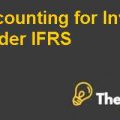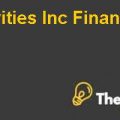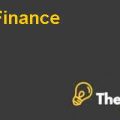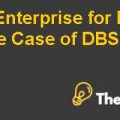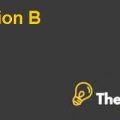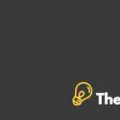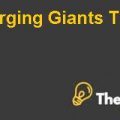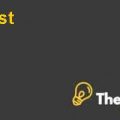
Return on Equity:
Return on equity measures how efficiently a company succeeds to generate profits from its invested equity.
The return on equity of Merck for the year 2008 represented 4.05% whereas for Abbott it represented 27.69%; which indicates that Abbott succeeded to generate sufficient returns over its invested capital.
The return on equity for 2010 of Abbott has decreased from 27.69% to 20.32% whereas, Merck reported an increase in return on equity over the last two years from 4.05% to 6.39%. On the other hand, Merck also reported a substantial decreased return on equity of 6.39% as compared to return on equity of Abbott which represented 20.32%.
Further, Abbott succeeded to generate sufficient returns from its equity over the last two years and reported an increase in ratio from 20.32% to 23.31% in 2012. Abbott reported a substantial increase in return on equity because it succeeded to increase its sales and reduce its costs substantially whereas, Merck failed to generate sufficient returns over its equity and reported a decline in return on equity from 6.39% to 5.45%. Additionally, the return on equity of Merck was far less than Abbott so it would be beneficial for Merck to take initial steps in order to increase its returns.
Gearing Ratio:
Gearing ratio is an indicator of leverage position of a company which measures the portion of debt as compared to equity.
The gearing ratio of Merck for 2008 represented 38.96% whereas for Abbott it was substantially higher which represented 49.85%. So it indicates that Abbott financed its major strategies through debts, which would require the company to pay high interest cost. However, there was a tax advantage as well because the tax is a deductable expense in calculating taxable profits.
Merck and Abbott reported an increase in gearing ratio in 2010 over the last two years from 38.96% to 83.73% and 49.85% to 55.23% respectively. An increase in gearing ratio would threaten the investor’s confidence and the company might face difficulty in raising further finance. Further, investors might charge high interest rate in order to bear specific risk.
The gearing ratio of Merck has decreased over the last two years from 83.73% to 64.34% whereas, Abbott had raised substantial finance over the last two years, which resulted in an increase in ratio from 55.23% to 67.68% It would tend Abbott to suffer high finance cost and low funds would be available to the company for distribution to its shareholders.
Interest Cover:
Interest cover ratio determines a company’s ability to honor its interest payments. The value of of the interest cover is directly proportional to the level of investors’ confidence; hence, higher interest cover will result in higher investors’ confidence and vice-versa.
The interest coverage ratio of Merck represented 4.67 times, which was far less than the interest coverage of Abbott which represented 12.08 times. Although, Merck had sufficient gearing ratio as compared to Abbott but Merck failed to generate sufficient interest cover which might threaten the confidence of debt holders. An increase in interest cover of Abbott represented that the company had generated sufficient returns as compared to Merck.
Further, the interest coverage ratio of Merck and Abbott had decreased in 2010 and both the companies reported a decrease in interest coverage ratio from 4.67 times to 4.42 times and 12.08 times to 11.33 times respectively. This was because both the companies had borrowed sufficient amount in order to finance its strategies, which resulted in a decrease in interest coverage however; Abbott still succeeded in maintaining good interest coverage than Merck which would boost the confidence of debt holder and they might charge low interest rate.
There is a slight increase in interest coverage ratio of Abbott from 11.33 to 11.57 times in 2012 whereas, it had been reduced for Merck from 4.42 to 3.78 times. The interest coverage ratio of Merck had significantly reduced over the last few years, which would threaten the confidence of debt holders and the company might face difficulty in raising further debt or there could also be a possibility that the debt holders might charge higher interest rate in order to bear sufficient risk which would ultimately reduce the cash flows of the company........................................
This is just a sample partial case solution. Please place the order on the website to order your own originally done case solution.

